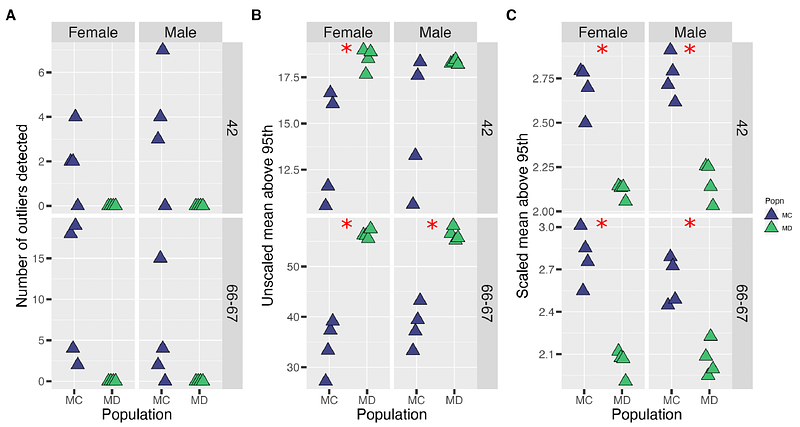Selection for dispersal under larval malnutrition results in a non-monotonic kernel in Drosophila melanogaster

Selection for dispersal under larval malnutrition results in a non-monotonic kernel in Drosophila melanogaster
Vibishan, B.; Malwade, A.; Gupta, S. R.; Koner, A.; Khodake, V.; Dey, S.
AbstractDispersal is a key strategy for organisms to track favorable conditions and a shifting global climate has necessitated its closer investigation. While the distribution of dispersal distances (i.e. dispersal kernel) influences several aspects of population ecology, it remains unclear how environmental factors affect the evolution of kernel features. The current study addresses this question using laboratory populations of Drosophila melanogaster selected for greater dispersal under a protein-deficient larval diet. Our results reveal that dispersal-selected populations initiate dispersal more often and travel further on average than corresponding unselected controls. Although there is a significant change in the overall kernel shape, selection has not led to a greater tendency for long-distance dispersal (LDD). Comparisons to previous data suggest that this could be a consequence of the protein-deficient larval diet. We also find that dispersal evolution under larval malnutrition leads to a non-monotonic dispersal kernel, with the highest frequencies at intermediate distances. The evolved shape of the dispersal kernel and the limited LDD phenotype therefore point to significant qualitative shifts in the evolution of the dispersal kernel due to a change in larval nutrition. Our results thus provide a starting point for further investigation of such context dependence in dispersal evolution.